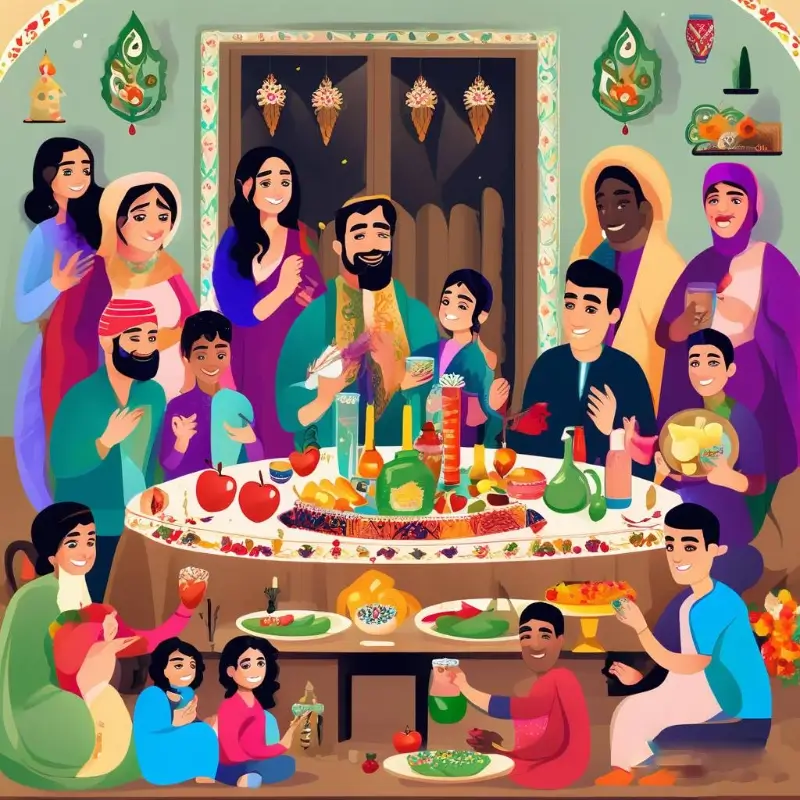why do Indians celebrate Holi?
Indians celebrate Holi to honor the victory of good over evil, the arrival of spring, and the renewal of life. This ancient Hindu festival has multiple mythological stories associated with it, but the most popular one revolves around Prahlada and Holika.
According to Hindu mythology, Holi commemorates the defeat of the demoness Holika. King Hiranyakashipu, Prahlada’s father, was granted a boon that made him virtually indestructible. However, Prahlada remained devoted to Lord Vishnu, much to his father’s annoyance. In an attempt to kill Prahlada, Hiranyakashipu asked his sister Holika, who had a boon that made her immune to fire, to sit with Prahlada in a blazing fire. But instead of Prahlada, Holika perished in the flames due to divine intervention, and Prahlada survived unscathed. This event symbolizes the triumph of devotion (Prahlada) over malevolence (Hiranyakashipu and Holika).
The festival also coincides with the arrival of spring, marking the end of winter and the beginning of a new agricultural cycle. People celebrate Holi by throwing colored powder and water at each other, dancing, singing, and enjoying special festive foods. It’s a time to forgive, forget enmities, repair broken relationships, and embrace love and unity. The colors used represent the vibrant hues of spring and the different moods and emotions that people experience.
In addition to its mythological and seasonal significance, Holi is also a time for socializing and community bonding, transcending social barriers and caste distinctions. It’s a joyous occasion that embodies the spirit of playfulness and inclusivity, bringing people together in a colorful and joyful celebration.
Holi is a significant and widely celebrated Hindu festival in India, known for its vibrant colors, playful traditions, and social gatherings. The festival has its roots in ancient Hindu scriptures and has multiple meanings and reasons for celebration depending on the region and local traditions. Here are some of the main reasons why Indians celebrate Holi:
- Celebration of Spring and Harvest: Holi is often associated with the arrival of spring, symbolizing renewal, rejuvenation, and the victory of good over evil. In many parts of India, it is also a harvest festival, thanking the gods for a good harvest and praying for continued prosperity.
- Festive Display of Colors: The throwing of colors is a central part of the Holi celebration. It represents the diversity and unity of印度 society, as well as the playful spirit of the festival. The colors also signify the transformation and vitality that come with the changing of seasons.
- Commemoration of a Divine Love Story: One of the most popular legends associated with Holi is that of Lord Krishna and Radha. It is said that Krishna, known for his mischievous nature, played a prank on Radha by smearing color on her face, which led to their love and union. This story is celebrated through music, dance, and the exchange of colors among friends and family.
- Narada Muni and His Lessons: Another story linked to Holi involves the sage Narada Muni, who was taught a lesson in the importance of unity and togetherness when he saw the divine couple, Prahlada and his mother, Holika, sitting together and sharing Holi sweets. This story emphasizes the importance of family and togetherness.
- Festive Food and Sweets: Holi is also a time for feasting. People prepare and share a variety of traditional sweets and snacks, which are offered to deities in temples and then distributed among friends and neighbors. This sharing of food is seen as a way to strengthen social bonds.
- Community and Unity: Holi is a festival that brings communities together. It transcends caste, class, and religious boundaries, allowing people from all walks of life to come together, play, and celebrate. This inclusivity and sense of unity are highly valued during the festival.
- Forgiveness and Reconciliation: In some regions, Holi is also associated with the concept of forgiving past wrongs and reconciling with enemies. It is seen as a time to let go of negative feelings and start anew.
Holi is a vibrant and joyous celebration that reflects the rich cultural heritage of India and the inclusive nature of its society. It is a time when people come together to rejoice, forget differences, and express their love and gratitude through music, dance, colors, and food.



